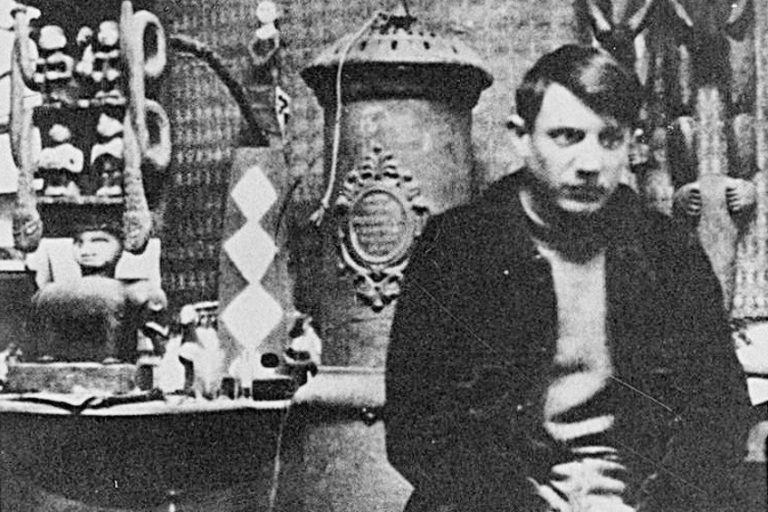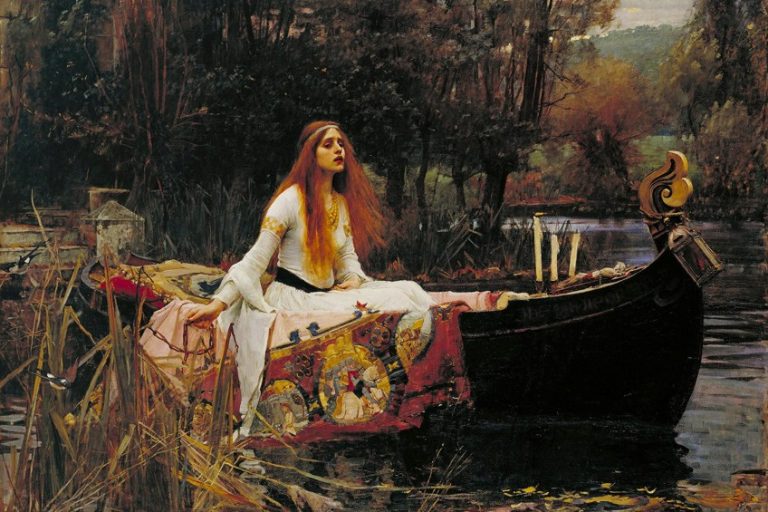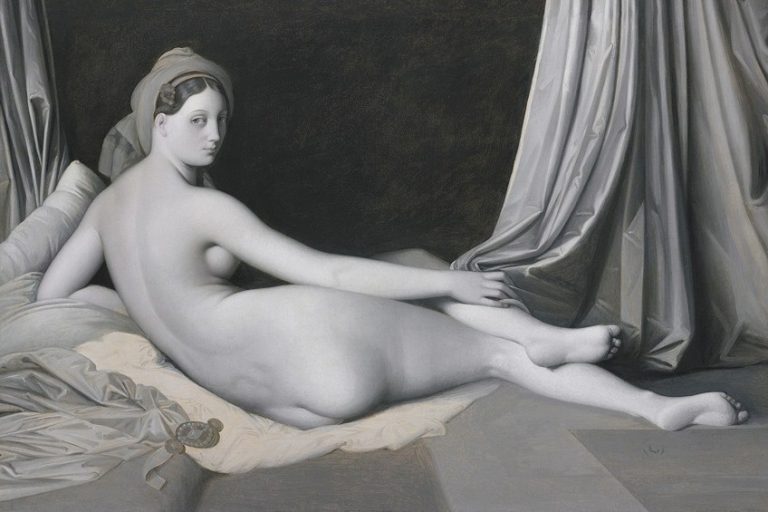Max Ernst Paintings – The 10 Most Notable Works of Art
Max Ernst, a luminary of Surrealism, wields his paintbrush like a conjurer, breathing life into dreams and nightmares alike. With a kaleidoscopic palette and a boundless imagination, Ernst’s canvases transport viewers to realms where the ordinary dissolves into the extraordinary. From his enigmatic landscapes to his provocative explorations of the subconscious, Ernst’s paintings resonate with a profound sense of mystery and wonder. As we journey through the labyrinthine corridors of his art, we are beckoned to confront the uncanny, the irrational, and the fantastical, inviting us to ponder the depths of human experience and the infinite possibilities of the creative mind.
Table of Contents
- 1 The Top 10 Max Ernst Paintings to Know
- 1.1 The Hat Makes the Man (1920)
- 1.2 The Elephant Celebes (1921)
- 1.3 Woman, Old Man and Flower Femme (1923)
- 1.4 Pietà or Revolution by Night (1923)
- 1.5 Ubu Imperator (1923)
- 1.6 Forest and Dove (1927)
- 1.7 The Robing of the Bride (1940)
- 1.8 Europe after the Rain II (1940 – 1942)
- 1.9 Napoleon in the Wilderness (1941)
- 1.10 The Triumph of Surrealism (1973)
- 2 Frequently Asked Questions
The Top 10 Max Ernst Paintings to Know
Embark on a journey through the visionary landscapes and surreal dreamscapes of Max Ernst’s most iconic works. From the haunting allure of The Elephants to the whimsical intricacies of The Robing of the Bride, this curated selection showcases the breadth and depth of Ernst’s imaginative genius. Prepare to be captivated by a whirlwind of symbolism, emotion, and the inexhaustible power of artistic exploration in these top Max Ernst paintings ever created.

The Hat Makes the Man (1920)
| Date | 1920 |
| Medium | Collage |
| Dimensions (cm) | Not available |
| Where Is It Housed? | Private collection |
The Hat Makes the Man (1920) marks a pivotal moment in Max Ernst’s artistic evolution as he delves into the anarchic realms of Dadaism. With its bold collage technique and jarring juxtaposition of disparate elements, the artwork challenges conventional notions of identity and reality.
Through the enigmatic imagery of hats and fragmented faces, Ernst invites viewers into a disorienting yet compelling exploration of the self and the absurdity of human existence.

The Elephant Celebes (1921)
| Date | 1921 |
| Medium | Oil on canvas |
| Dimensions (cm) | 114.6 × 88.9 |
| Where Is It Housed? | Tate Modern, London, United Kingdom |
In The Elephant Celebes (1921), Ernst crafts a surreal dreamscape where the boundaries between the conscious and subconscious blur. The central figure of the elephant, rendered in a disjointed and abstract manner, serves as a symbol of mystery and intrigue. Surrounding it, a cast of surreal characters and objects dance in a fantastical spectacle.
This invites viewers to decipher the cryptic narrative hidden within the canvas.
Woman, Old Man and Flower Femme (1923)
| Date | 1923 |
| Medium | Oil on canvas |
| Dimensions (cm) | 130 × 97 |
| Where Is It Housed? | Private collection |
Woman, Old Man and Flower Femme (1923) reveals Ernst’s fascination with the interplay between human forms and natural elements. The painting unfolds like a dream, with its figures morphing and merging into the landscape around them. Through his unique blend of symbolism and abstraction, Ernst explores themes of transformation and metamorphosis.
He invites viewers to contemplate the fluidity of identity and the eternal cycle of life and death.
Pietà or Revolution by Night (1923)
| Date | 1923 |
| Medium | Oil on canvas |
| Dimensions (cm) | 54.9 × 38.1 |
| Where Is It Housed? | The Museum of Modern Art, New York City, United States |
Pietà or Revolution by Night (1923) stands as a haunting meditation on the aftermath of war and social upheaval. In this enigmatic composition, Ernst presents a surreal vision of grief and despair, with fragmented figures contorted in anguish. Through his use of symbolic imagery and stark contrasts, Ernst evokes a sense of profound existential angst.
He captures the tumultuous spirit of post-war Europe.

Ubu Imperator (1923)
| Date | 1923 |
| Medium | Oil on canvas |
| Dimensions (cm) | 130.2 × 89.5 |
| Where Is It Housed? | Private collection |
Ubu Imperator (1923) emerges as a scathing critique of authoritarianism and the abuse of power. Drawing inspiration from Alfred Jarry’s infamous character, Ernst transforms Ubu into a grotesque and tyrannical figure. Through his bold and satirical imagery, Ernst exposes the absurdity of authority.
He invites viewers to confront the oppressive forces that shape society.

Forest and Dove (1927)
| Date | 1927 |
| Medium | Oil on canvas |
| Dimensions (cm) | 73.7 × 54.6 |
| Where Is It Housed? | Private collection |
Forest and Dove (1927) unveils a serene and mystical tableau, where the natural world converges with the spiritual realm. Through a delicate interplay of light and shadow, Ernst creates a sense of ethereal tranquility within the forest setting. The presence of the dove, a symbol of peace and renewal, imbues the scene with a sense of hope and transcendence.
He is inviting viewers to immerse themselves in the beauty and serenity of the natural world.

The Robing of the Bride (1940)
| Date | 1940 |
| Medium | Oil on canvas |
| Dimensions (cm) | 92.1 × 73.7 |
| Where Is It Housed? | Tate Modern, London, United Kingdom |
The Robing of the Bride (1940) mesmerizes with its intricate symbolism and dreamlike imagery, embodying Ernst’s fascination with the unconscious mind. Against a backdrop of swirling patterns and mysterious landscapes, the figure of the bride emerges, veiled in layers of enigma and desire. Through his masterful manipulation of form and color, Ernst invites viewers into a surreal realm where fantasy and reality intertwine.
By doing this, he is beckoning them to explore the depths of the human psyche.
Europe after the Rain II (1940 – 1942)
| Date | 1940 – 1942 |
| Medium | Oil on canvas |
| Dimensions (cm) | 208.6 × 308.6 |
| Where Is It Housed? | The Wadsworth Atheneum Museum of Art, Connecticut, United States |
Europe after the Rain II (1940 – 1942) stands as a haunting testament to the ravages of war and the fragility of human civilization. In this apocalyptic landscape, Ernst conjures a vision of desolation and despair, where the remnants of a once-thriving world lie in ruins. Through his stark and surreal imagery, Ernst confronts viewers with the harrowing realities of conflict and destruction.
He challenges them to contemplate the fragility of peace and the resilience of the human spirit.
Napoleon in the Wilderness (1941)
| Date | 1941 |
| Medium | Oil on canvas |
| Dimensions (cm) | 91.4 × 73.7 |
| Where Is It Housed? | Private collection |
Napoleon in the Wilderness (1941) offers a poignant reflection on power, isolation, and the existential plight of the individual. Against a barren and desolate landscape, Napoleon stands as a solitary figure, his imposing presence juxtaposed against the vast emptiness of the wilderness.
Through his introspective portrayal of the iconic historical figure, Ernst invites viewers to ponder the complexities of ambition, hubris, and the search for meaning in a world devoid of certainty.
The Triumph of Surrealism (1973)
| Date | 1973 |
| Medium | Oil on canvas |
| Dimensions (cm) | Not available |
| Where Is It Housed? | Private collection |
The Triumph of Surrealism (1973) serves as a triumphant culmination of Ernst’s lifelong exploration of the surreal. Through a mesmerizing array of symbolic motifs and dreamlike imagery, Ernst celebrates the boundless power of the imagination to transcend the constraints of reality. In this exuberant homage to Surrealism, Ernst invites viewers to embrace the whimsical, the absurd, and the fantastical, as they embark on a journey through the kaleidoscopic landscapes of the unconscious mind.
Max Ernst’s paintings stand as testaments to the boundless potential of artistic expression. Through his visionary works, Ernst shattered the constraints of reality, inviting us into a realm where the surreal reigns supreme. With each brushstroke, he unfurled the hidden recesses of the mind, challenging our perceptions and beckoning us to explore the labyrinthine depths of the human psyche. As we bid farewell to his canvases, we carry with us not only the lingering echoes of his fantastical worlds but also a renewed appreciation for the transformative power of art. Max Ernst’s legacy endures as a beacon of imagination, inspiring generations to embrace the enigmatic and embrace the unknown on the canvas of life.
Frequently Asked Questions
What Are Some Key Themes Explored in Max Ernst’s Paintings?
Max Ernst’s paintings often explore themes such as dreams, the subconscious, mythology, and the human condition. His works frequently feature surreal landscapes, bizarre creatures, and enigmatic symbolism, inviting viewers to delve into the depths of the imagination and the mysteries of the psyche.
What Techniques Did Max Ernst Use in His Paintings?
Max Ernst employed a variety of innovative techniques in his paintings, including frottage (rubbing textured surfaces), grattage (scraping paint across surfaces), and decalcomania (pressing paint between surfaces). These experimental methods allowed Ernst to tap into the subconscious and create richly textured, dreamlike imagery characteristic of Surrealism.
What Is the Significance of Max Ernst’s Legacy in the Art World?
Max Ernst’s legacy looms large in the art world as a pioneering force in Surrealism and avant-garde art. His groundbreaking techniques and visionary imagery continue to inspire generations of artists to explore the boundless possibilities of the creative process. Ernst’s work remains a testament to the enduring power of art to challenge, provoke, and transform our understanding of the world.
Isabella studied at the University of Cape Town in South Africa and graduated with a Bachelor of Arts majoring in English Literature & Language and Psychology. Throughout her undergraduate years, she took Art History as an additional subject and absolutely loved it. Building on from her art history knowledge that began in high school, art has always been a particular area of fascination for her. From learning about artworks previously unknown to her, or sharpening her existing understanding of specific works, the ability to continue learning within this interesting sphere excites her greatly.
Her focal points of interest in art history encompass profiling specific artists and art movements, as it is these areas where she is able to really dig deep into the rich narrative of the art world. Additionally, she particularly enjoys exploring the different artistic styles of the 20th century, as well as the important impact that female artists have had on the development of art history.
Learn more about Isabella Meyer and the Art in Context Team.
Cite this Article
Isabella, Meyer, “Max Ernst Paintings – The 10 Most Notable Works of Art.” Art in Context. March 13, 2024. URL: https://artincontext.org/max-ernst-paintings/
Meyer, I. (2024, 13 March). Max Ernst Paintings – The 10 Most Notable Works of Art. Art in Context. https://artincontext.org/max-ernst-paintings/
Meyer, Isabella. “Max Ernst Paintings – The 10 Most Notable Works of Art.” Art in Context, March 13, 2024. https://artincontext.org/max-ernst-paintings/.











